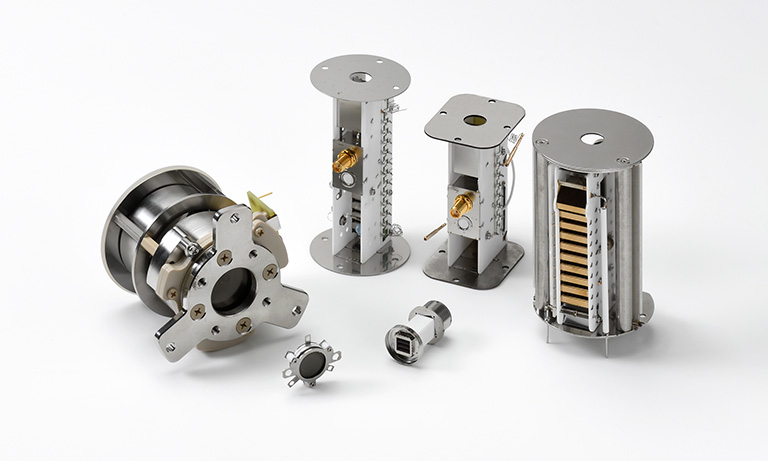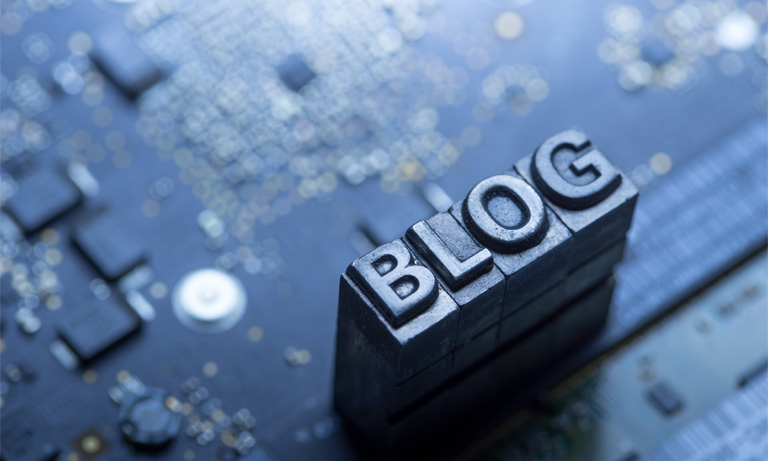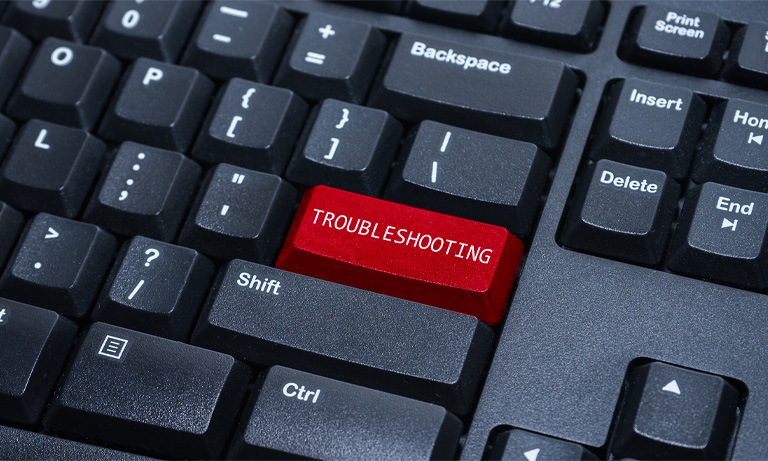United States (EN)
Select your region or country.

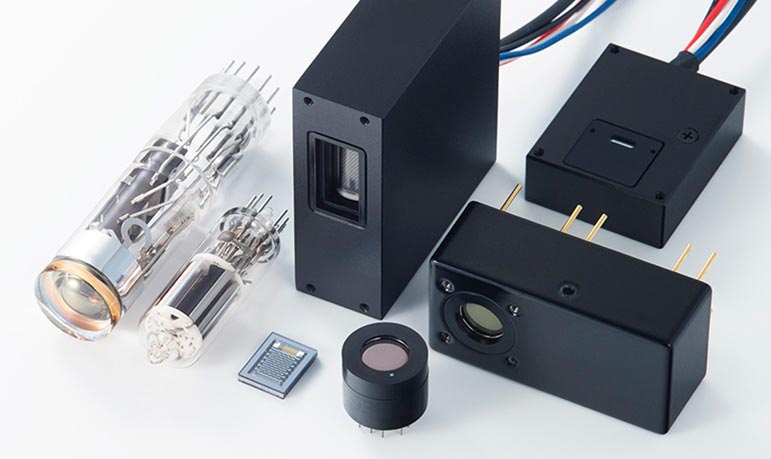
Applications | Photomultiplier tubes (PMTs)
Here, we will introduce several applications of our PMTs.
Flow cytometer
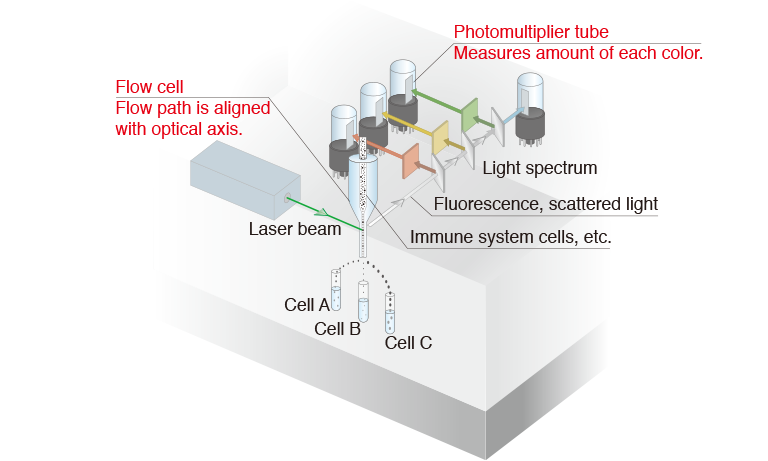
When light is irradiated onto a rapidly flowing solution that co ntains cells or chromosomes, fluorescence and scattered light is released from the cells or chromosomes. Analyzing this fluorescence and scattered light helps unravel the cell properties and their structures. This field of study is known as flow cytometry.
Flow cytometers are typical instruments used in this field for example, for research in cytology, immunology, and hematology, and also in part for labo ratory testing (medical front) including blood analysis.
Blood inspection
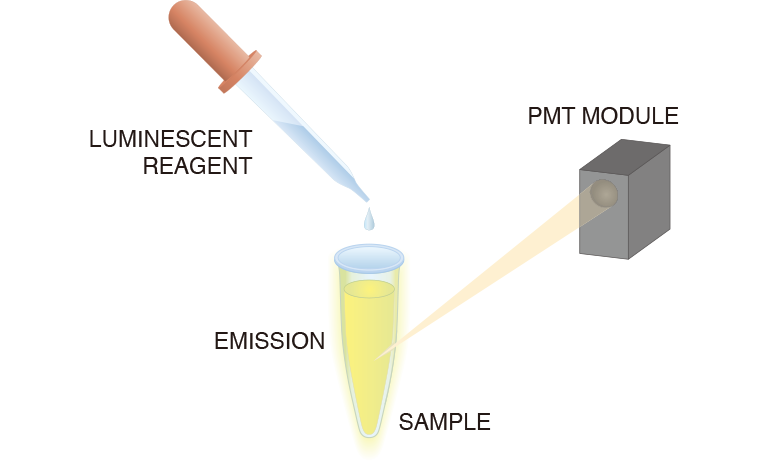
Blood includes the antigen, which is the material causes immune reaction, of individual disease or bacteria which the person has. There is a blood inspection method which can decide that the subject has a disease or bacteria to what extent by reacting small amount of blood with an antibody as a reagent which bonds with specific antigen and measuring its amount of luminescence. While the study in order to improve efficiency of bonding or emission has been advanced, there has been also a demand to decrease the amount of sample used to measure. In order to achieve such demand, photomultiplier tubes are used as the detector which can perform single photon counting.
Hygiene monitor
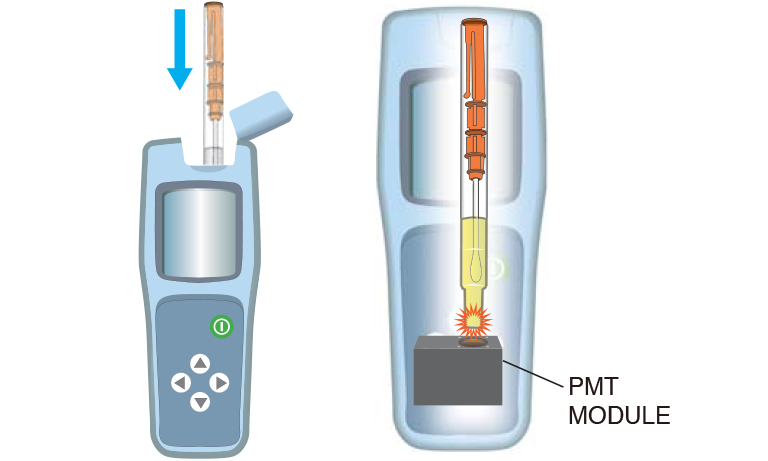
The hygiene monitor is also called an ATP analyzer. This device extracts the ATP held in bacteria and cells and makes measurements by causing a reaction with the luminous reagent in the ATP using the firefly's light emission principle. This hygiene monitor is used for making purity checks at restaurants and factories producing foods, etc. In the test, the surface of the object for inspection is wiped with a cotton swab and the extent of dirt or contamination immediately found just by inserting the swab in the sanitary monitor. A great feature of the hygiene monitor is that the photon counting method allows highly sensitive measurements using just an extremely small amount of sample material.
Portable survey meters
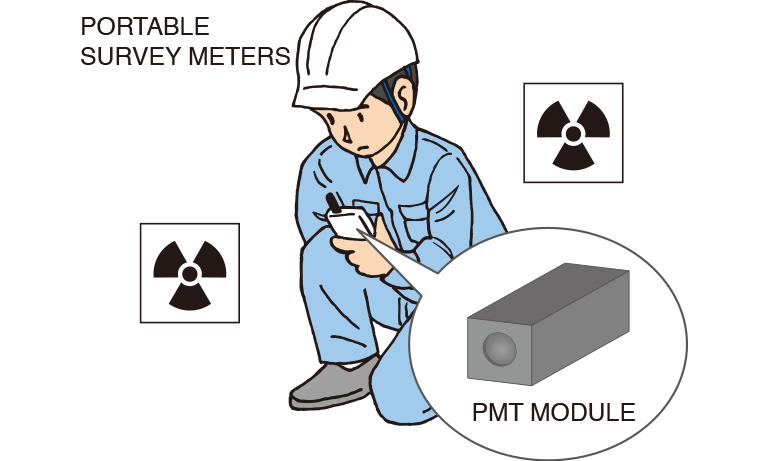
Portable radiation measurement devices or survey meters are essential for detecting radioactive substances for public safety in customs inspections, nuclear power plants, and hospitals, etc. Among various radiation measurement devices, the most sensitive type uses a combination of photomultiplier tube and scintillator and offers sensitivity ranging from several ten to hundreds of times higher than Geiger-Müller counters (GM counters). Photomultiplier tubes used in this application must be compact, rugged, and easily coupled to scintillators, and also have low power consumption.
Environmental Measurement
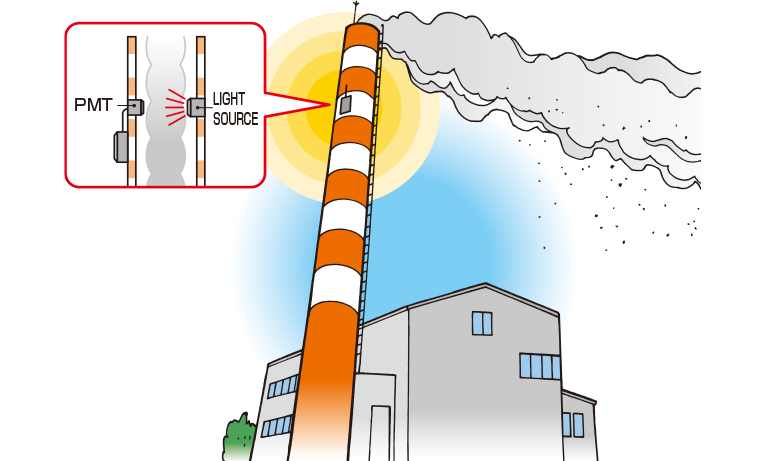
SOx monitors or sulfur dioxide analyzers are used to measure the environmental concentration of sulfur dioxide in the air. Recent models use the ultraviolet fluorescence method that detects sulfur dioxide concentration in the air by irradiating ultraviolet light onto sulfur dioxides to excite SO₂ and then measure the fluorescence intensity emitted from the SO₂.
PMT is also used for NOx monitor and particle Counter. NOx monitors are used to measure nitrogen oxides which are air pollutants contained in the air and exhaust gases emitted from various combustion engines. A particle counter measures the density of particles floating in the atmosphere or inside rooms by measuring light scattering. Microparticles such as PM2.5 can be measured by utilizing the absorption of beta rays.
Semiconductor wafer inspection systems
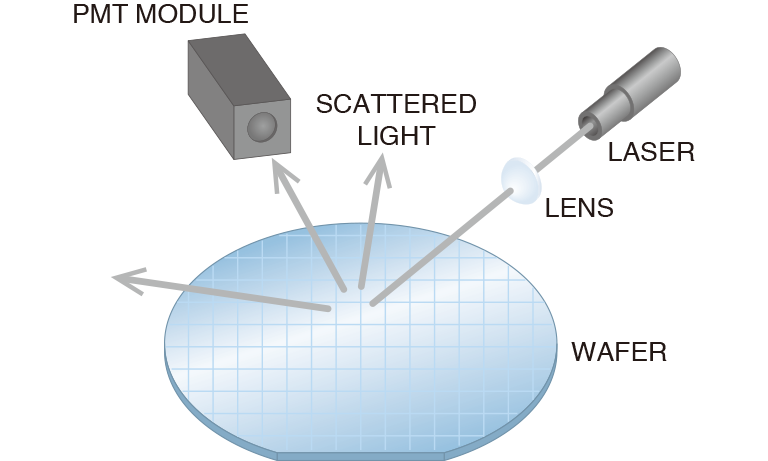
These systems find defects on semiconductor wafers, by scanning a laser beam onto the wafer and then detecting the resulting scattered light to find any debris, dirt or damage on the wafer surface. Advances in semiconductor technology have made lithographic lines on wafers even finer so that even smaller defects must now be detected making these inspection devices an essential tool.
- Confirmation
-
It looks like you're in the . If this is not your location, please select the correct region or country below.
You're headed to Hamamatsu Photonics website for US (English). If you want to view an other country's site, the optimized information will be provided by selecting options below.
In order to use this website comfortably, we use cookies. For cookie details please see our cookie policy.
- Cookie Policy
-
This website or its third-party tools use cookies, which are necessary to its functioning and required to achieve the purposes illustrated in this cookie policy. By closing the cookie warning banner, scrolling the page, clicking a link or continuing to browse otherwise, you agree to the use of cookies.
Hamamatsu uses cookies in order to enhance your experience on our website and ensure that our website functions.
You can visit this page at any time to learn more about cookies, get the most up to date information on how we use cookies and manage your cookie settings. We will not use cookies for any purpose other than the ones stated, but please note that we reserve the right to update our cookies.
1. What are cookies?
For modern websites to work according to visitor’s expectations, they need to collect certain basic information about visitors. To do this, a site will create small text files which are placed on visitor’s devices (computer or mobile) - these files are known as cookies when you access a website. Cookies are used in order to make websites function and work efficiently. Cookies are uniquely assigned to each visitor and can only be read by a web server in the domain that issued the cookie to the visitor. Cookies cannot be used to run programs or deliver viruses to a visitor’s device.
Cookies do various jobs which make the visitor’s experience of the internet much smoother and more interactive. For instance, cookies are used to remember the visitor’s preferences on sites they visit often, to remember language preference and to help navigate between pages more efficiently. Much, though not all, of the data collected is anonymous, though some of it is designed to detect browsing patterns and approximate geographical location to improve the visitor experience.
Certain type of cookies may require the data subject’s consent before storing them on the computer.
2. What are the different types of cookies?
This website uses two types of cookies:
- First party cookies. For our website, the first party cookies are controlled and maintained by Hamamatsu. No other parties have access to these cookies.
- Third party cookies. These cookies are implemented by organizations outside Hamamatsu. We do not have access to the data in these cookies, but we use these cookies to improve the overall website experience.
3. How do we use cookies?
This website uses cookies for following purposes:
- Certain cookies are necessary for our website to function. These are strictly necessary cookies and are required to enable website access, support navigation or provide relevant content. These cookies direct you to the correct region or country, and support security and ecommerce. Strictly necessary cookies also enforce your privacy preferences. Without these strictly necessary cookies, much of our website will not function.
- Analytics cookies are used to track website usage. This data enables us to improve our website usability, performance and website administration. In our analytics cookies, we do not store any personal identifying information.
- Functionality cookies. These are used to recognize you when you return to our website. This enables us to personalize our content for you, greet you by name and remember your preferences (for example, your choice of language or region).
- These cookies record your visit to our website, the pages you have visited and the links you have followed. We will use this information to make our website and the advertising displayed on it more relevant to your interests. We may also share this information with third parties for this purpose.
Cookies help us help you. Through the use of cookies, we learn what is important to our visitors and we develop and enhance website content and functionality to support your experience. Much of our website can be accessed if cookies are disabled, however certain website functions may not work. And, we believe your current and future visits will be enhanced if cookies are enabled.
4. Which cookies do we use?
There are two ways to manage cookie preferences.
- You can set your cookie preferences on your device or in your browser.
- You can set your cookie preferences at the website level.
If you don’t want to receive cookies, you can modify your browser so that it notifies you when cookies are sent to it or you can refuse cookies altogether. You can also delete cookies that have already been set.
If you wish to restrict or block web browser cookies which are set on your device then you can do this through your browser settings; the Help function within your browser should tell you how. Alternatively, you may wish to visit www.aboutcookies.org, which contains comprehensive information on how to do this on a wide variety of desktop browsers.
5. What are Internet tags and how do we use them with cookies?
Occasionally, we may use internet tags (also known as action tags, single-pixel GIFs, clear GIFs, invisible GIFs and 1-by-1 GIFs) at this site and may deploy these tags/cookies through a third-party advertising partner or a web analytical service partner which may be located and store the respective information (including your IP-address) in a foreign country. These tags/cookies are placed on both online advertisements that bring users to this site and on different pages of this site. We use this technology to measure the visitors' responses to our sites and the effectiveness of our advertising campaigns (including how many times a page is opened and which information is consulted) as well as to evaluate your use of this website. The third-party partner or the web analytical service partner may be able to collect data about visitors to our and other sites because of these internet tags/cookies, may compose reports regarding the website’s activity for us and may provide further services which are related to the use of the website and the internet. They may provide such information to other parties if there is a legal requirement that they do so, or if they hire the other parties to process information on their behalf.
If you would like more information about web tags and cookies associated with on-line advertising or to opt-out of third-party collection of this information, please visit the Network Advertising Initiative website http://www.networkadvertising.org.
6. Analytics and Advertisement Cookies
We use third-party cookies (such as Google Analytics) to track visitors on our website, to get reports about how visitors use the website and to inform, optimize and serve ads based on someone's past visits to our website.
You may opt-out of Google Analytics cookies by the websites provided by Google:
https://tools.google.com/dlpage/gaoptout?hl=en
As provided in this Privacy Policy (Article 5), you can learn more about opt-out cookies by the website provided by Network Advertising Initiative:
http://www.networkadvertising.org
We inform you that in such case you will not be able to wholly use all functions of our website.
Close











